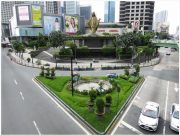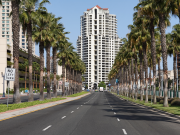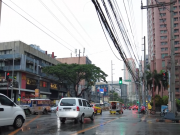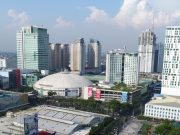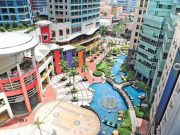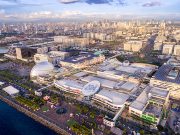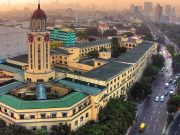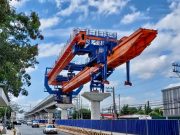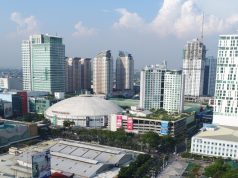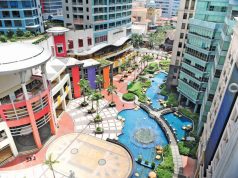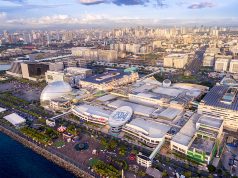Politics, Economy, and Real Estate
The Philippine economy and its real estate industry have experienced significant transformations over the past two decades, shaped by the interplay between political dynamics and economic policies. As a nation located in Southeast Asia, the Philippines has emerged as one of the region’s significant viable players, attracting both local and foreign investors seeking growth opportunities in diverse sectors, including real estate.
The Philippine economy has exhibited resilience and remarkable growth potential. In fact, according to S&P Global, “the Philippines economy grew at a pace of 7.6% in 2022, the fastest rate of economic growth recorded by the Philippines since 1976. With a strong growth forecast over the medium-term outlook, the size of the Philippines GDP measured in US Dollar nominal terms is set to reach USD one trillion by 2033.”.
Moreover, the Bangko Sentral ng Pilipinas (BSP or Central Bank of the Philippines) reports that “The Philippines sustained its economic expansion with GDP growth of 6.4% yoy in Q1 2023, exceeding analysts’ median forecasts (Bloomberg Survey). The growth reflects strong domestic demand supported by sustained improvement in labor market conditions, tourism, investments, and construction benefitting from the full opening of major economic sectors. The economy is targeted to continue its high-growth performance of 6.0%-7.0% in 2023 and 6.5%-8.0% in 2024-2028.“
Anchored by a young and dynamic workforce, the country has demonstrated its capacity for innovation, adaptability, and entrepreneurial spirit. Amidst these promising prospects, the real estate sector has played a pivotal role in supporting economic expansion, providing a solid foundation for various industries to thrive.
However, it is crucial to recognize the essential link between political stability, effective leadership, and sustained economic growth. In a nation where political transitions occur every six years due to term limits for the presidency, the impact of each administration on the Philippine economy and real estate industry becomes a vital area of analysis. The choices made by leaders, their policies, and their management of socioeconomic challenges have had far-reaching consequences for the real estate landscape.
This article delves into the intricate relationship between politics, the Philippine economy, and the real estate sector over the past 20 years. From the presidency of Joseph Estrada to the current administration of Bongbong Marcos, Jr., we will analyze the economic policies, challenges, and achievements that have influenced real estate development in the Philippines. By examining the milestones and happenings during the tenure of each president, we will uncover the pivotal moments and significant transformations that have shaped the nation’s real estate industry.
Presidents in Focus
I. President Joseph Estrada (1998-2001)
A. Overview of the political climate during Estrada’s presidency
Joseph Estrada assumed the presidency of the Philippines in 1998, inheriting a nation marked by a mix of optimism and economic challenges. As a former popular movie actor, Estrada’s rise to power was fueled by his charisma and his appeal to the masses, who hoped for inclusive governance and poverty alleviation.
During Estrada’s presidency, the political climate was characterized by both domestic and international factors. Domestically, there was a growing concern over corruption and a desire for social reforms. Internationally, the aftermath of the Asian financial crisis cast a shadow over the Philippine economy, posing significant hurdles for the administration to overcome.
However, Estrada’s presidency faced significant controversy and was marred by allegations of corruption and mismanagement. These challenges led to political instability and widespread protests, ultimately culminating in his impeachment trial in 2001. The trial resulted in Estrada’s removal from office and the assumption of Vice President Gloria Macapagal-Arroyo as the next president.
Despite the political turmoil, it is important to assess the economic milestones and challenges during Estrada’s presidency, as they have left a lasting impact on the Philippine economy and the real estate industry.
B. Economic milestones and challenges
Asian financial crisis and its impact on the Philippine economy:
The Asian financial crisis of 1997 had a profound effect on the Philippine economy, and Estrada’s presidency coincided with the aftermath of this crisis. The crisis resulted in a sharp depreciation of the Philippine peso, high inflation rates, and reduced investor confidence. These challenges posed hurdles for economic growth and real estate development during Estrada’s tenure.
Estrada’s pro-poor policies and their effect on real estate development:
Recognizing the need to address poverty and inequality, Estrada implemented various pro-poor policies aimed at improving the living conditions of marginalized sectors. These policies included affordable housing programs, such as the Socialized Housing Finance Corporation (SHFC), which aimed to provide low-cost housing to the urban poor. These initiatives had a notable impact on the real estate industry, stimulating the demand for affordable housing and spurring development in this sector.
C. Impact on the real estate industry
Housing sector reforms and affordable housing programs:
Estrada’s administration focused on implementing housing sector reforms and promoting affordable housing initiatives. These efforts aimed to address the housing needs of low-income Filipinos, resulting in increased housing supply and improved accessibility to decent and affordable homes. The implementation of the SHFC, along with other programs, led to the development of socialized housing projects and community-based initiatives.
Infrastructure projects and their influence on real estate growth:
Infrastructure development played a crucial role during Estrada’s presidency, as the government sought to stimulate economic growth and attract investments. The construction of roads, bridges, and other transportation infrastructure had a positive impact on the real estate sector, particularly in terms of accessibility and connectivity. Improved infrastructure opened up new areas for real estate development, leading to increased property values and economic activity in these regions.
II. President Gloria Macapagal-Arroyo (2001-2010)
A. Overview of the political climate during Arroyo’s presidency
Gloria Macapagal-Arroyo assumed the presidency in 2001, following the political upheaval that led to the ousting of Joseph Estrada. Her presidency was marked by a combination of domestic challenges and a shifting global landscape.
Arroyo faced significant political opposition and encountered various controversies during her tenure, including allegations of election fraud and corruption scandals. During Arroyo’s presidency, the Philippines experienced a mix of economic milestones and challenges.
B. Economic milestones and challenges
The global economic downturn and its effects on the Philippines:
Arroyo’s presidency coincided with a challenging global economic environment, characterized by the aftermath of the 9/11 terrorist attacks and the subsequent global economic downturn. These external factors affected the Philippine economy, leading to a slowdown in economic growth and increased unemployment rates. The real estate industry, being closely tied to economic performance, faced significant challenges during this period.
Arroyo’s economic reforms and their impact on real estate:
Arroyo’s administration implemented various economic reforms aimed at stabilizing the economy and promoting sustainable growth. These policies focused on fiscal discipline, attracting foreign investments, and strengthening the financial sector. The implementation of reforms such as the Value Added Tax (VAT) and the creation of the Public-Private Partnership (PPP) program had implications for the real estate sector, particularly in terms of infrastructure development and private sector participation.
C. Impact on the real estate industry
Growth of the business process outsourcing (BPO) industry and its effect on office space demand:
Arroyo’s presidency witnessed the significant growth of the business process outsourcing (BPO) industry in the Philippines. The government actively promoted the country as an attractive destination for outsourcing services, leading to increased demand for office spaces, particularly in major cities such as Metro Manila, Cebu, and Davao. The rise of the BPO sector fueled the development of office buildings and contributed to the growth of the real estate industry.
Arroyo’s infrastructure projects and their contribution to real estate development:
Arroyo’s administration prioritized infrastructure development as a means to stimulate economic growth and attract investments. Notable infrastructure projects during her presidency included the North Luzon Expressway (NLEX) and the Subic-Clark-Tarlac Expressway (SCTEX), which improved connectivity between key areas in Luzon. These infrastructure projects opened up new opportunities for real estate development, especially in areas near transportation corridors, resulting in increased property values and commercial activity.
III. President Benigno Aquino III (2010-2016)
A. Overview of the political climate during Aquino’s presidency
Benigno Aquino III, commonly known as Noynoy Aquino, assumed the presidency in 2010, bringing with him a mandate for change and reform. His administration was marked by a renewed focus on good governance, transparency, and anti-corruption efforts. Aquino’s presidency was characterized by stable political leadership and a commitment to address socio-economic challenges inherited from previous administrations.
During Aquino’s tenure, the Philippines experienced significant economic milestones and confronted various challenges. Understanding the political climate during this period is essential to comprehend its impact on the Philippine economy and the real estate industry.
B. Economic milestones and challenges
Aquino’s focus on good governance and anti-corruption efforts:
One of the defining features of Aquino’s presidency was his unwavering commitment to good governance and the fight against corruption. His administration pursued several high-profile cases against corrupt officials, signaling a clear message of accountability and transparency. The drive for good governance improved investor confidence, leading to increased foreign direct investments and economic stability.
Strong economic growth and credit rating upgrades:
Aquino’s presidency witnessed robust economic growth, with the Philippines outperforming many of its Asian counterparts. The country achieved an average annual GDP growth rate of around 6%, drawing praise from international financial institutions. Standard & Poor’s and Fitch Ratings both upgraded the Philippines’ credit rating to investment grade during this period, further bolstering investor confidence.
C. Impact on the real estate industry
Rise of condominium developments in major cities:
The strong economic growth and urbanization during Aquino’s presidency fueled a surge in demand for housing, particularly in major urban centers. The rise of the middle class and the increasing influx of overseas Filipino workers (OFWs) looking for investment opportunities supported the growth of the real estate market, particularly in the condominium sector. Developers responded to the demand by constructing high-rise condominium buildings to cater to the urban population’s housing needs.
Infrastructure projects and improved connectivity:
Aquino’s administration continued the emphasis on infrastructure development, focusing on transportation and public works projects. The Public-Private Partnership (PPP) program gained momentum during this period, resulting in the construction and upgrading of various infrastructure projects such as roads, airports, and seaports. The improvement in connectivity and accessibility positively influenced real estate development, creating new investment hubs and attracting developers to previously untapped regions.
IV. President Rodrigo Duterte (2016-2022)
A. Overview of the political climate during Duterte’s presidency
Rodrigo Duterte assumed the presidency in 2016 with a promise of change and a strong focus on addressing crime, corruption, and drug-related issues. Known for his no-nonsense leadership style, Duterte’s presidency was characterized by both domestic and international attention. His policies and controversial remarks often sparked debates and garnered media coverage, impacting the overall political climate during his tenure.
Duterte’s presidency coincided with several significant economic developments and challenges, shaping the Philippine economy and the real estate industry in distinct ways.
B. Economic milestones and challenges
“Build, Build, Build” infrastructure program:
A central pillar of Duterte’s economic agenda was the ambitious “Build, Build, Build” infrastructure program. Aimed at accelerating infrastructure development and promoting economic growth, the program targeted major transportation and public works projects. Notable projects included the Metro Manila Subway, the Mindanao Railway, and the expansion of airports and seaports. The initiative aimed to improve connectivity, enhance mobility, and attract investments in various regions, creating opportunities for real estate development along transportation corridors.
Economic growth and foreign investment inflows:
Under Duterte’s administration, the Philippine economy continued to grow, albeit at a slightly slower pace compared to previous years. The country remained one of the fastest-growing economies in the region. The administration’s efforts to maintain macroeconomic stability and promote business-friendly policies resulted in sustained foreign investment inflows, impacting the real estate sector through increased demand for commercial and industrial properties.
C. Impact on the real estate industry
Property market expansion outside Metro Manila:
Duterte’s infrastructure initiatives contributed to the decentralization of economic activities outside Metro Manila. The development of transportation projects and the promotion of growth centers in various regions encouraged real estate investors and developers to explore opportunities beyond the capital. As a result, major cities and provinces experienced increased interest in residential, commercial, and industrial properties.
Growth in the tourism sector and hospitality industry:
Duterte’s administration recognized the potential of the tourism sector as a driver of economic growth. The government actively promoted tourism and facilitated policies to attract foreign visitors. The influx of tourists and the growing popularity of the Philippines as a tourist destination spurred investments in the hospitality industry, leading to an increase in hotel and resort developments in key tourist destinations. This growth had a significant impact on the real estate market in these areas.
V. President Bongbong Marcos Jr. (2022-Present)
A. Overview of the political climate during Marcos Jr.’s presidency
Bongbong Marcos Jr. assumed the presidency in 2022, marking a return of the Marcos family to the highest office after several decades. His presidency brings with it a unique political climate shaped by historical legacies, social dynamics, and evolving national aspirations. As the son of the late dictator Ferdinand Marcos, Marcos Jr.’s presidency carries significant historical weight and elicits diverse opinions and emotions from the Filipino population.
The economic milestones and challenges during Marcos Jr.’s presidency will undoubtedly shape the Philippine economy and the real estate industry in distinctive ways. It is crucial to examine the early developments of his presidency to gain insights into its potential impact.
B. Early economic developments and challenges
Policy direction and economic vision:
Marcos Jr.’s presidency is still in its early stages, and the full extent of his economic policies and vision is yet to be realized. The direction of his administration’s economic agenda will influence the overall business climate, investor confidence, and potential implications for the real estate industry.
Addressing economic recovery and pandemic impacts:
The COVID-19 pandemic has significantly affected the global economy, including the Philippines. Marcos Jr.’s administration will face the challenge of navigating the country’s economic recovery and addressing the long-term impacts of the pandemic. Stimulus packages, vaccination efforts, and economic reforms will play a crucial role in shaping the real estate industry’s recovery and future growth.
C. Potential impact on the real estate industry
Infrastructure development and urban planning:
Infrastructure projects have been a key focus for recent Philippine administrations, and it is expected that Marcos Jr.’s presidency will continue this emphasis on infrastructure development. The construction of new roads, bridges, airports, and other transportation facilities can enhance connectivity, stimulate economic growth, and create opportunities for real estate development in various regions. Urban planning initiatives that prioritize sustainable and inclusive development can also shape the real estate landscape.
Investor sentiment and foreign direct investment:
Marcos Jr.’s presidency will be closely observed by both domestic and international investors. Investor sentiment and confidence in the political and economic stability of the country will impact foreign direct investment inflows, which can have significant implications for the real estate industry. Positive developments that promote transparency, good governance, and favorable business conditions can attract investments in commercial, residential, and industrial properties.
Evaluation of the overall trends and implications
The past 20 years have demonstrated that political stability, effective governance, and economic policies are pivotal in influencing the Philippine economy and the real estate sector. Each administration’s focus on infrastructure development, anti-corruption efforts, and economic reforms has had significant implications for the real estate industry.
Trends such as the growth of the BPO industry, urbanization, and regional development have shaped property demand, pricing, and investment opportunities. The emphasis on infrastructure projects has opened up new areas for real estate development and contributed to the growth of various property types.
However, political challenges, such as corruption allegations and political transitions, have at times disrupted economic growth and impacted investor confidence. External factors, such as global economic fluctuations and the COVID-19 pandemic, have also posed challenges to sustained economic growth and the real estate sector.
Possible future developments and their potential influence on the real estate sector
The future of the Philippine economy and the real estate industry will be determined by various factors, including political leadership, economic policies, and global dynamics. Key developments to watch for include:
- Continued infrastructure projects: Ongoing infrastructure initiatives will enhance connectivity and urban planning, potentially opening up new investment opportunities and driving regional real estate growth.
- Economic recovery from the pandemic: The successful management of the COVID-19 pandemic and the revival of economic activities will be crucial for stimulating the real estate industry and attracting investments.
- Investor sentiment: Investor confidence in the political climate and economic stability will directly impact foreign direct investment inflows and shape the real estate market’s direction.
- Sustainable and inclusive development: Government policies that promote sustainable and inclusive development can drive equitable growth in the real estate sector and address housing and urbanization challenges.
Takeaways
In conclusion, the political impact on the Philippine economy and real estate industry over the past 20 years has been profound and multifaceted. Each presidency has brought its own set of challenges, milestones, and policy directions, influencing the country’s economic growth and shaping the real estate landscape. From the stability and anti-corruption efforts under Aquino’s administration to the infrastructure-driven approach of Duterte’s presidency, and the recent beginning of Marcos Jr.’s term, each era has left a lasting imprint on the nation.
The real estate industry has responded to these political dynamics, with trends such as the rise of condominium developments, the expansion of investment outside Metro Manila, and the growth of the hospitality sector. However, challenges such as political uncertainties, global economic fluctuations, and the ongoing impact of the COVID-19 pandemic must be navigated to ensure sustained growth and resilience in the real estate sector.
Looking ahead, it is crucial to monitor future developments and their potential influence on the real estate industry. Continued infrastructure projects, economic recovery efforts, investor sentiment, and sustainable development policies will play vital roles in shaping the sector’s trajectory. Adapting to emerging trends, leveraging opportunities, and addressing socio-economic and environmental concerns will be essential for long-term success and sustainable growth in the Philippine real estate industry.
Understanding the political impact on the Philippine economy and real estate industry over the past two decades, stakeholders can make informed decisions, anticipate market shifts, and contribute to the overall progress and stability of the nation. The interplay between politics, economics, and real estate will continue to shape the landscape, and a comprehensive analysis of this relationship will remain crucial for all those involved in the sector.
Additional Sources
https://www.globalpropertyguide.com/Asia/philippines/Price-History




